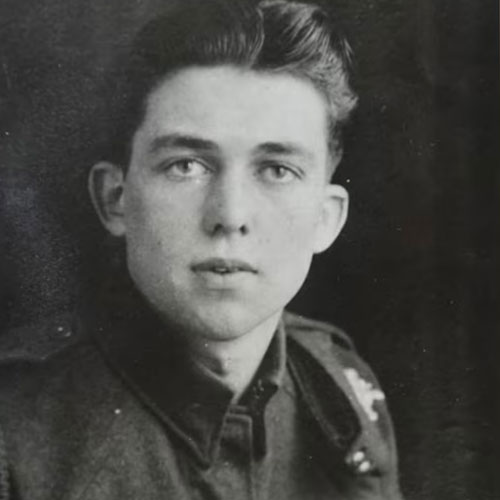John A. Cornwell – Légion d’Honneur
As the youngest survivor of the D-Day landings, John Cornwell will make a special effort next week to pay his respects to the young soldiers who did not come home following the liberation of Normandy.
Mr Cornwell, aged 92, only revealed his true age when he was asked to explain why he was 63, and not 65, when collecting his war pension on retirement. Being a “big, strong lad”, he enlisted at Gloucester in 1942, aged only 15. Less than two years later he was to see the horror of D-Day, fighting his way up Sword Beach on his way to capture the town of Bayeux.
Speaking ahead of a visit to Normandy to mark the 75th anniversary of the landings, Mr Cornwell said: “I always go to the headstones of the other young lads, the 16-year-olds and 17-year-olds, who did not come out alive.
“There were no John Waynes on that day, we were all young men, many of us scared and a long way from home. I’m forever grateful I came out alive to tell the story.”
Mr Cornwell was born and grew up in Cheltenham, working at the town’s gas works after leaving school. But unhappiness at home led him to enlist under the pretence he was born in 1924, and not 1926. It took him two goes to convince a recruitment officer to let him in. But he managed it and within a week of signing up he was dispatched to Colchester for training.
Joining the 2nd Battalion Gloucestershire regiment, 56 Infantry Bridge, he was to take part in the D-Day landings aged just 17. His platoon were to land behind the Royal Hampshire Regiment on a section of the beach called Jig Green before advancing to take Bayeux. Being a left-hander he was armed with a Bren light machine gun weighing 24 pounds, much heavier than the eight-pound rifles. The target was to liberate the town by midnight. But it was not that simple.
Mr Cornwell, speaking from his home in Southam near Cheltenham, said:
“It was something we had been training on for months, but when we came up behind the Hampshires, we saw they were taking a beating with many, many casualties. It was a horrible sight. We ended up having to move three miles up the beach to the King Red sector where, when it was my turn, I jumped into three feet of water, struggling to hold onto my gun and pack. The water was freezing and the noise all around was terrible. We did manage to get ashore and moved on to Bayeux, but too late to take it by midnight. The following morning we were able to take the town.”
Two weeks later Mr Cornwell was badly injured in an explosion south of the town. His hand was broken and his left leg shattered. It was the end of his war and he spent two years in and out of hospitals back in England. At Gloucester City Hospital, now called Gloucester Royal, plastic surgeons worked on his leg – although it resulted in it being two inches shorter than the right. Having recovered, he went on to work as an engineer for Smiths Group in Cheltenham. He married his wife Betty, who he met at a youth club in Cheltenham, and the pair had three children.
But Mr Cornwell would not talk about the war until the 40th anniversary of D-Day in 1984, when he returned to the Normandy beaches and visited the vast cemeteries.
He was awarded the Legion d’Honneur and was told he was the youngest recipient of the award.
